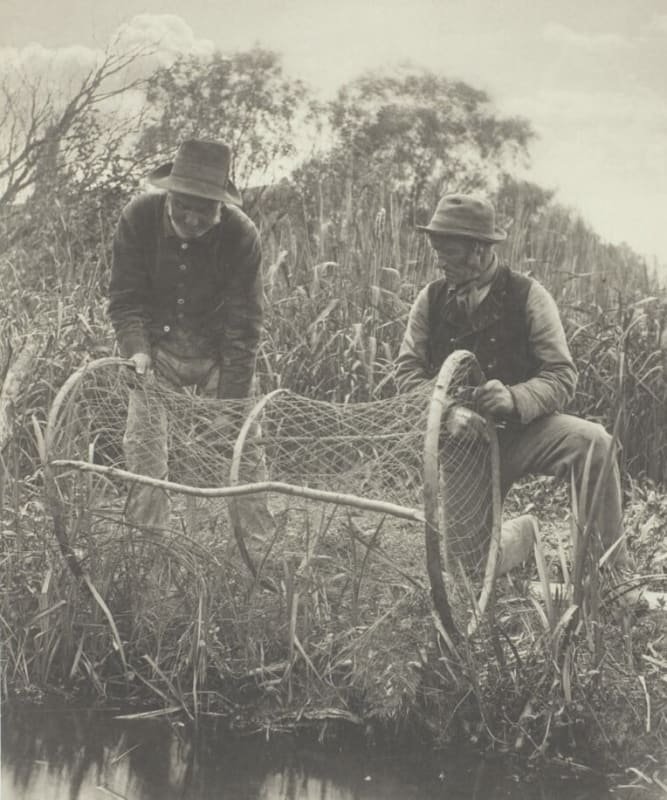Purdy Hicks Gallery is delighted to bring together the work of pioneering 19th-century photographer P. H. Emerson and contemporary artist Susan Derges, exploring their focus on the natural world through their distinctive photographic processes and times.
The presentation of original vintage photogravures and platinum prints by P.H. Emerson, has been organised in conjunction with Robert Hershkowitz; the renowned 19th Century photography specialist.
P. H. Emerson (1856–1936) was an English photography pioneer, known for capturing the life and landscapes of the East of England’s agrarian community. A vocal and early advocate for ‘truthful’ photography as an art form, he held a celebrated, and at times controversial, position within the contemporary photographic establishment.
Emerson aimed to preserve the old ways of country life with new photographic methods, using soft focus to create images of the world to reflect natural eyesight. To print photographs in books and preserve their high level of realism and quality, he used the new and expensive gravure photographic process.
Born in Cuba, Emerson moved to England at the age of 13. Introduced to photography on bird-watching trips, he gave up his profession as a medical doctor and pursued a career in photography and writing. He became a founding member of the Camera Club of London in 1885 and was elected to the Council of the Royal Photographic Society the following year. Throughout his life, he wrote about photography, publishing several influential albums and treatises, and continuing to debate the purpose and meaning of photography with the photographic establishment. His work is held in major collections including the Victoria & Albert Museum, London ; the Museum of Modern Art, NY; and the Getty Museum, LA.
This exhibition presents a selection of images from Life and Landscape on the Norfolk Broads (1886) and Marsh Leaves (1895), which exemplify Emerson’s vision of the English pastoral. These works illustrate traditional rural activities - cutting reeds, casting nets, hunting snipe - set against a shifting backdrop of water and sky. Inspired by the French Naturalist painters, Emerson sought to capture his own rural idyll with a commitment to artistic truthfulness.
Susan Derges (born 1955, London) explores the relationship between the self and nature, the observer and the observed, often working with visual metaphors to reveal invisible scientific and natural processes. Her practice includes cameraless, lens-based, and digital methods, drawing on both landscape and the biological sciences. She is best known for her technique of immersing photographic paper directly into rivers and shorelines to capture the movement of water. Often working at night, she uses moonlight and hand-held flash light to expose her images directly onto light-sensitive paper.
Over twenty years ago, Derges began her river series, but many early prints were marked by stones, branches, or uneven water conditions. Using new technology, she has recently returned to these early works—restoring and transforming them into new images.
Derges studied at the Slade School of Fine Art and continued her research in Japan at Tsukuba University. She is a visiting professor in Photography at the University of Plymouth. Her work has been exhibited internationally, with collections including the Victoria & Albert Museum; the Getty Museum, LA; the Metropolitan Museum of Art, NY; and the Museum of Fine Arts, Boston.
Susan Derges and P. H. Emerson are united by a deep respect for nature and a desire to reflect its rhythms with honesty and care. Emerson captured rural life with clarity and truth, rejecting artificial scenes. Derges, using experimental and scientific approaches, works directly with natural elements; light, water, and plant life. Both artists explore how we observe and live with the natural world. Yet with almost a century between them, the world and our climate has changed dramatically. Shown together, their work sees a quiet, serious engagement with place, time, and the enduring power of the landscape, reminding us of our responsibility to protect and respect it.

